Edmond Adib
Synthetic ECG Signal Generation using Probabilistic Diffusion Models
Mar 16, 2023
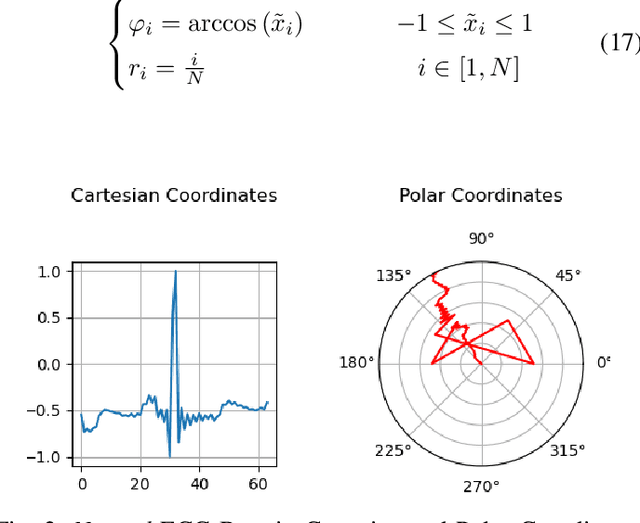
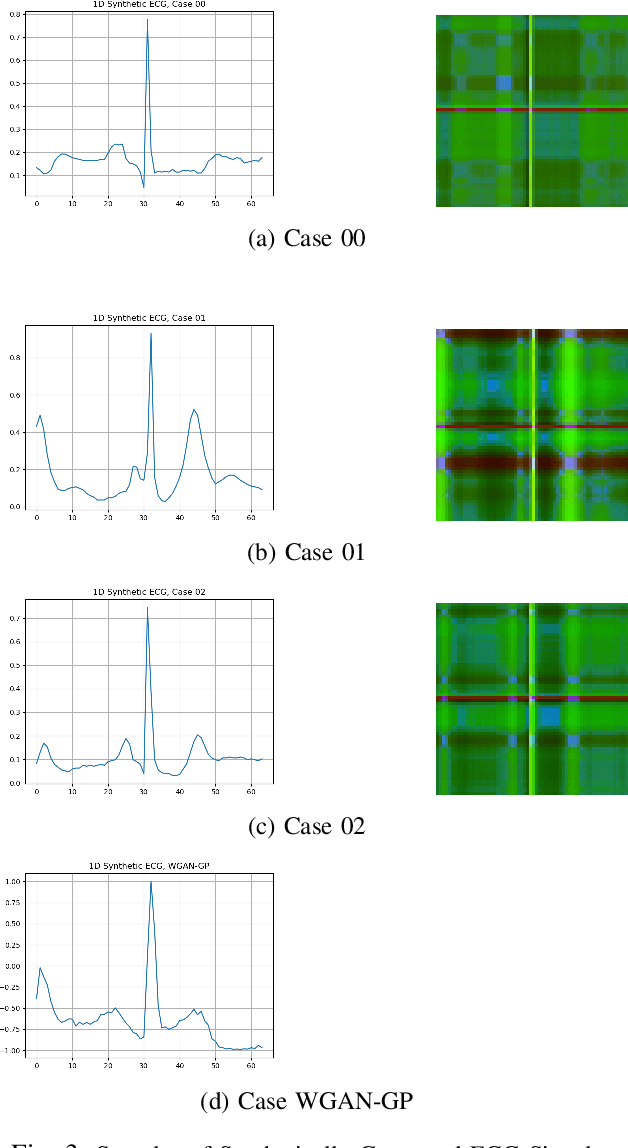
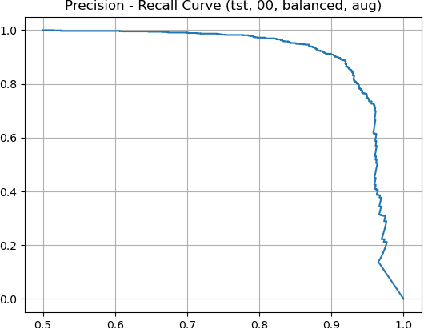
Abstract:Deep learning image processing models have had remarkable success in recent years in generating high quality images. Particularly, the Improved Denoising Diffusion Probabilistic Models (DDPM) have shown superiority in image quality to the state-of-the-art generative models, which motivated us to investigate its capability in generation of the synthetic electrocardiogram (ECG) signals. In this work, synthetic ECG signals are generated by the Improved DDPM and by the Wasserstein GAN with Gradient Penalty (WGAN-GP) models and then compared. To this end, we devise a pipeline to utilize DDPM in its original $2D$ form. First, the $1D$ ECG time series data are embedded into the $2D$ space, for which we employed the Gramian Angular Summation/Difference Fields (GASF/GADF) as well as Markov Transition Fields (MTF) to generate three $2D$ matrices from each ECG time series that, which when put together, form a $3$-channel $2D$ datum. Then $2D$ DDPM is used to generate $2D$ $3$-channel synthetic ECG images. The $1$D ECG signals are created by de-embedding the $2D$ generated image files back into the $1D$ space. This work focuses on unconditional models and the generation of only \emph{Normal} ECG signals, where the Normal class from the MIT BIH Arrhythmia dataset is used as the training phase. The \emph{quality}, \emph{distribution}, and the \emph{authenticity} of the generated ECG signals by each model are compared. Our results show that, in the proposed pipeline, the WGAN-GP model is superior to DDPM by far in all the considered metrics consistently.
Arrhythmia Classification using CGAN-augmented ECG Signals
Jan 26, 2022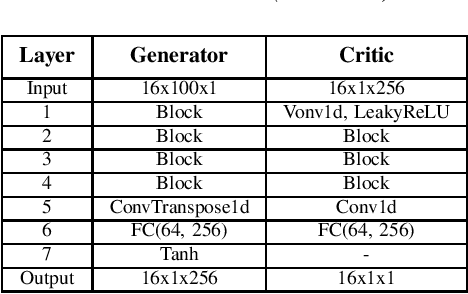
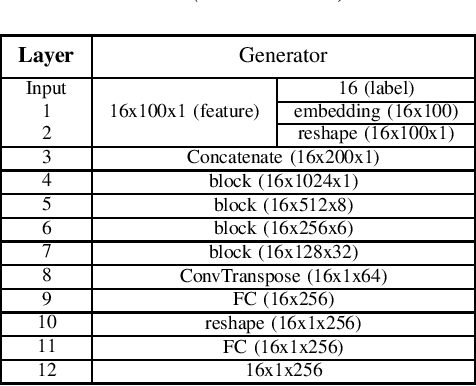
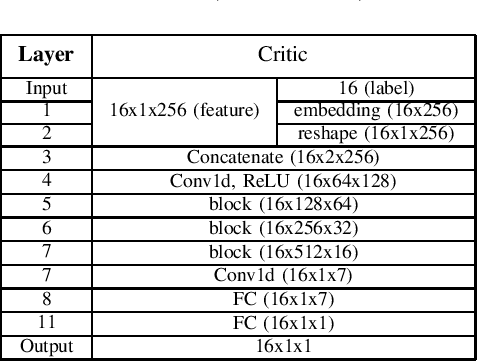
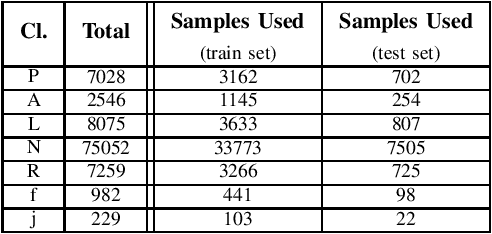
Abstract:One of the easiest ways to diagnose cardiovascular conditions is Electrocardiogram (ECG) analysis. ECG databases usually have highly imbalanced distributions due to the abundance of Normal ECG and scarcity of abnormal cases which are equally, if not more, important for arrhythmia detection. As such, DL classifiers trained on these datasets usually perform poorly, especially on minor classes. One solution to address the imbalance is to generate realistic synthetic ECG signals mostly using Generative Adversarial Networks (GAN) to augment and the datasets. In this study, we designed an experiment to investigate the impact of data augmentation on arrhythmia classification. Using the MIT-BIH Arrhythmia dataset, we employed two ways for ECG beats generation: (i) an unconditional GAN, i.e., Wasserstein GAN with gradient penalty (WGAN-GP) is trained on each class individually; (ii) a conditional GAN model, i.e., Auxiliary Classifier Wasserstein GAN with gradient penalty (AC-WGAN-GP) is trained on all the available classes to train one single generator. Two scenarios are defined for each case: i) unscreened where all the generated synthetic beats were used directly without any post-processing, and ii) screened where a portion of generated beats are selected based on their Dynamic Time Warping (DTW) distance with a designated template. A ResNet classifier is trained on each of the four augmented datasets and the performance metrics of precision, recall and F1-Score as well as the confusion matrices were compared with the reference case, i.e., when the classifier is trained on the imbalanced original dataset. The results show that in all four cases augmentation achieves impressive improvements in metrics particularly on minor classes (typically from 0 or 0.27 to 0.99). The quality of the generated beats is also evaluated using DTW distance function compared with real data.
Synthetic ECG Signal Generation Using Generative Neural Networks
Dec 05, 2021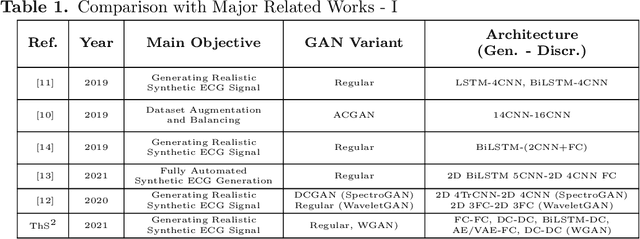

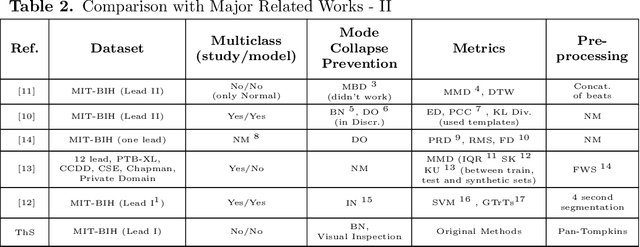
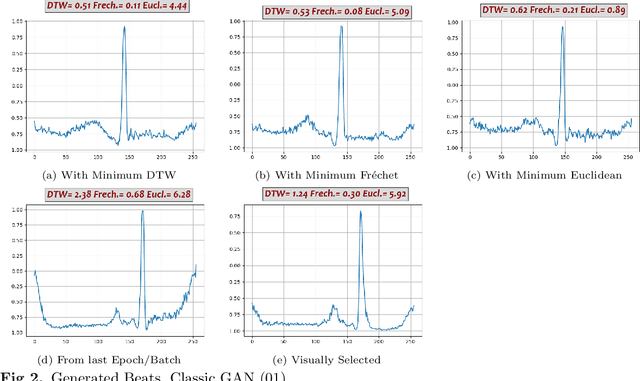
Abstract:Electrocardiogram (ECG) datasets tend to be highly imbalanced due to the scarcity of abnormal cases. Additionally, the use of real patients' ECG is highly regulated due to privacy issues. Therefore, there is always a need for more ECG data, especially for the training of automatic diagnosis machine learning models, which perform better when trained on a balanced dataset. We studied the synthetic ECG generation capability of 5 different models from the generative adversarial network (GAN) family and compared their performances, the focus being only on Normal cardiac cycles. Dynamic Time Warping (DTW), Fr\'echet, and Euclidean distance functions were employed to quantitatively measure performance. Five different methods for evaluating generated beats were proposed and applied. We also proposed 3 new concepts (threshold, accepted beat and productivity rate) and employed them along with the aforementioned methods as a systematic way for comparison between models. The results show that all the tested models can to an extent successfully mass-generate acceptable heartbeats with high similarity in morphological features, and potentially all of them can be used to augment imbalanced datasets. However, visual inspections of generated beats favor BiLSTM-DC GAN and WGAN, as they produce statistically more acceptable beats. Also, with regards to productivity rate, the Classic GAN is superior with a 72% productivity rate.
 Add to Chrome
Add to Chrome Add to Firefox
Add to Firefox Add to Edge
Add to Edge